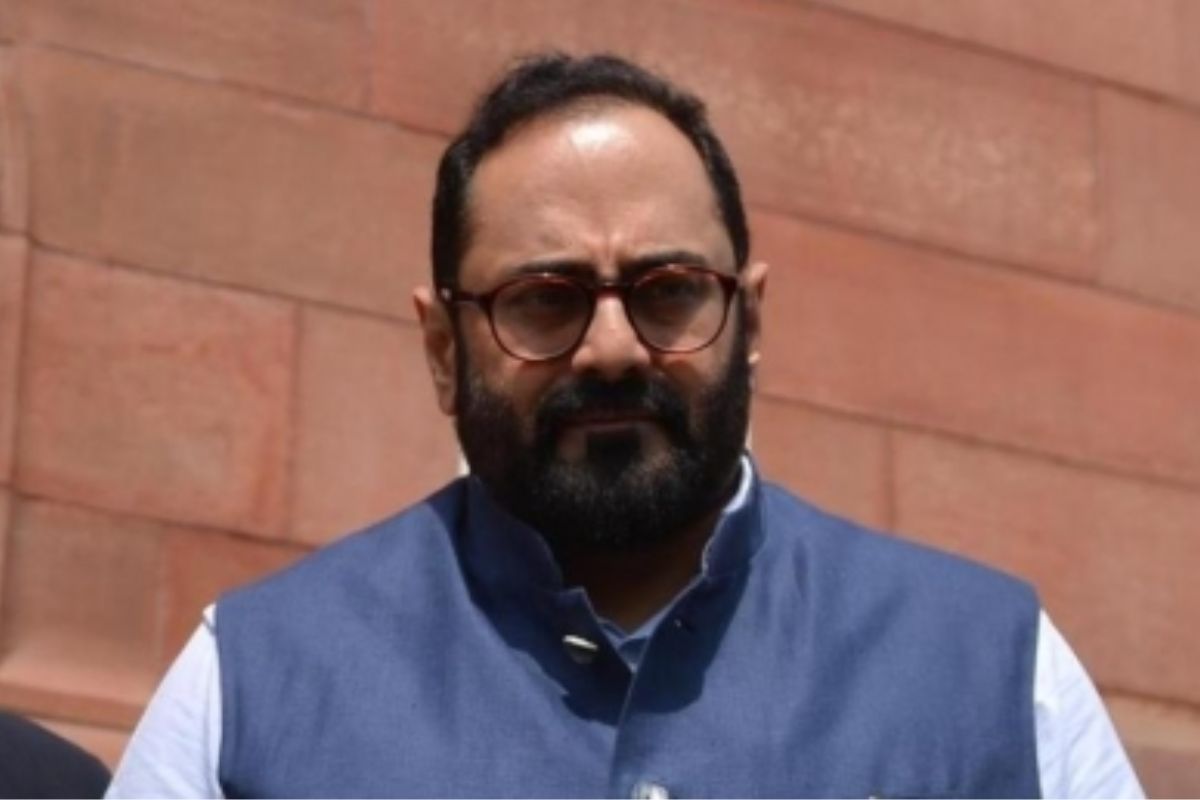Apple extending its support for ISRO-created navigation system called NavIC for iPhone 15 Pro and Pro Max is a significant achievement for the country and the government is planning to make it a standard practice that all devices using GPS technology should have NavIC-powered chipsets inside, Minister of State for Electronics and IT, Rajeev Chandrasekhar, said on Thursday.
Apple has adopted the Indian satellite navigation system NavIC, an alternative to the Global Positioning System (GPS), for its high-end iPhone 15 Pro and the iPhone 15 Pro Max models for location-based services.
Advertisement
This is the first time the iPhone maker has extended support for NavIC to its iPhone models.
“After the successful missions of Chandrayaan-3 and Aditya-L1, we have reached another big milestone with ISRO’s NavIC technology. Now, for the very first time, the iPhone 15 Pro series has extended support for the NavIC technology. The endorsement of NavIC as a global positioning system technology, or a solution incorporated into the most popular and most widely used device in the world, is certainly not a small thing,” the minister told reporters.
India aims to expand NavIC coverage globally and it wants tech companies to make their devices compatible with the new standard before then.
To meet the positioning, navigation and timing requirements of the nation, ISRO established a regional navigation satellite system called Navigation with Indian Constellation (NavIC).
Accord Software and Systems is the first in India to design NavIC chips. They’ve created more than a million NAVIC IC chips using advanced 28-nanometer technology.
“We’re planning to make it a standard practice that all devices using GPS technology should have NAVIC-powered chipsets or NAVIC chips inside. When you look at the IT PLI scheme this time, it includes incentives for system designers and manufacturers who incorporate Indian-designed chips into their products,” said Chandrasekhar.
As mobile phone designs and chip technology continue to mature and reach the granularity and the sophistication required for mobile devices, “the chips powering those devices could very well be NavIC chips,” he stressed.
NavIC coverage area includes India and a region up to 1,500 km beyond Indian boundary, according to the Indian Space Research Organisation (ISRO).
NavIC signals are interoperable with the other global navigation satellite system (GNSS) signals namely GPS, Glonass, Galileo and BeiDou.
According to Chandrasekhar, ‘Make in India’ iPhone 15 represents another big milestone in the country’s electronic and semiconductor progress.
“Another milestone is that on the very same day, when a customer in New York, Tokyo or London receives brand-new iPhone 15, an Indian customer will also receive an iPhone 15. The only difference is that the iPhone in London is ‘Made in China’ while the iPhone in India is manufactured in India,” the minister emphasised.
This demonstrates the coming of age of India’s presence in the global electronic supply chain, he added.
With iPhone 15, Apple has made India a sweet spot in its future scheme of things, as it doubles down on local manufacturing.
Driven by the premiumisation of the smartphone market, uptick in first-time users who are shifting from Android to the Apple ecosystem and a young population, India is now among the top five global markets for Apple.











